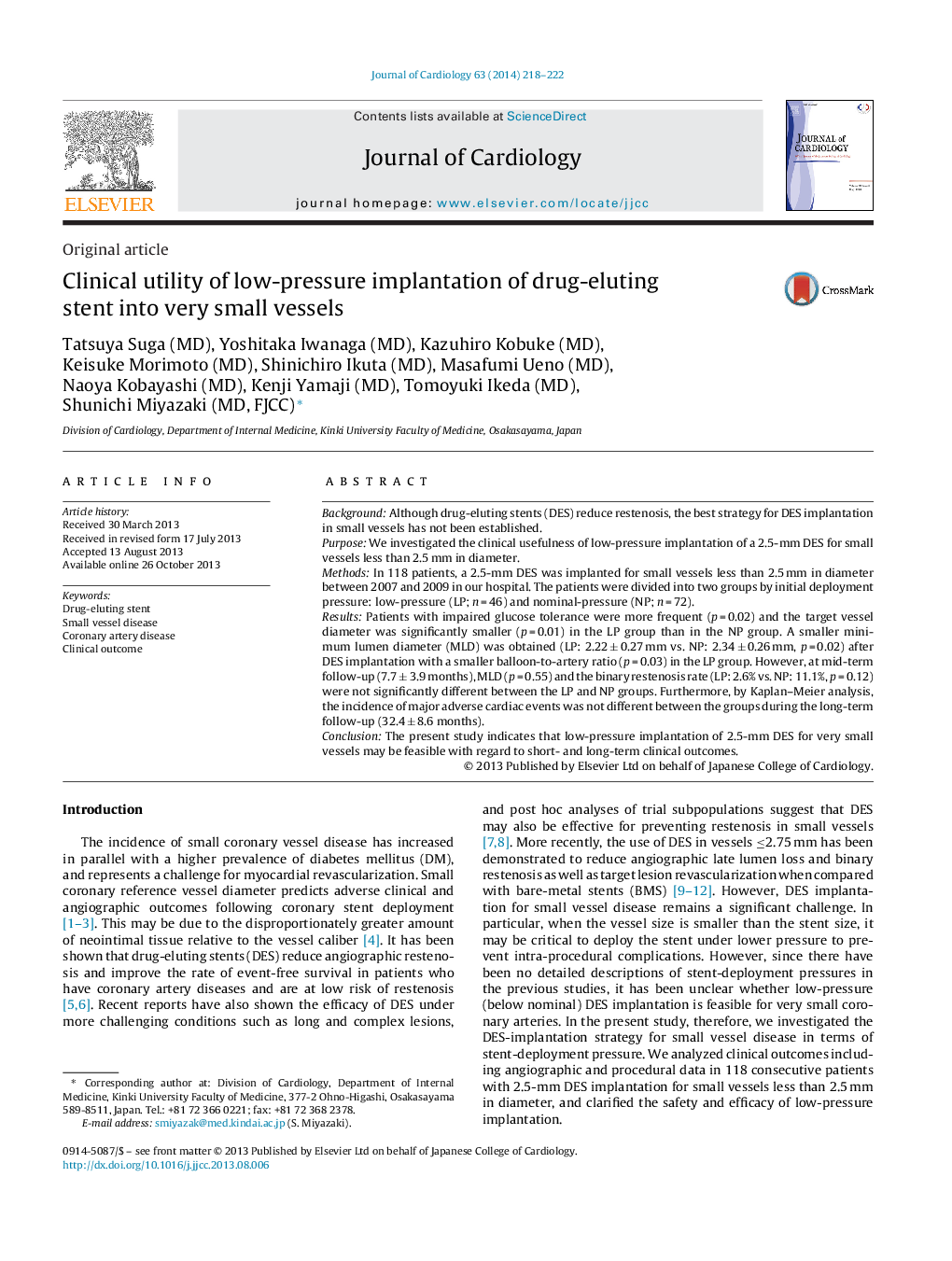| Article ID | Journal | Published Year | Pages | File Type |
|---|---|---|---|---|
| 2963054 | Journal of Cardiology | 2014 | 5 Pages |
BackgroundAlthough drug-eluting stents (DES) reduce restenosis, the best strategy for DES implantation in small vessels has not been established.PurposeWe investigated the clinical usefulness of low-pressure implantation of a 2.5-mm DES for small vessels less than 2.5 mm in diameter.MethodsIn 118 patients, a 2.5-mm DES was implanted for small vessels less than 2.5 mm in diameter between 2007 and 2009 in our hospital. The patients were divided into two groups by initial deployment pressure: low-pressure (LP; n = 46) and nominal-pressure (NP; n = 72).ResultsPatients with impaired glucose tolerance were more frequent (p = 0.02) and the target vessel diameter was significantly smaller (p = 0.01) in the LP group than in the NP group. A smaller minimum lumen diameter (MLD) was obtained (LP: 2.22 ± 0.27 mm vs. NP: 2.34 ± 0.26 mm, p = 0.02) after DES implantation with a smaller balloon-to-artery ratio (p = 0.03) in the LP group. However, at mid-term follow-up (7.7 ± 3.9 months), MLD (p = 0.55) and the binary restenosis rate (LP: 2.6% vs. NP: 11.1%, p = 0.12) were not significantly different between the LP and NP groups. Furthermore, by Kaplan–Meier analysis, the incidence of major adverse cardiac events was not different between the groups during the long-term follow-up (32.4 ± 8.6 months).ConclusionThe present study indicates that low-pressure implantation of 2.5-mm DES for very small vessels may be feasible with regard to short- and long-term clinical outcomes.
